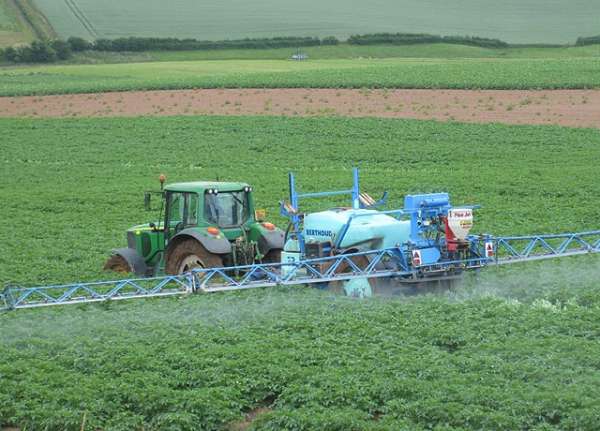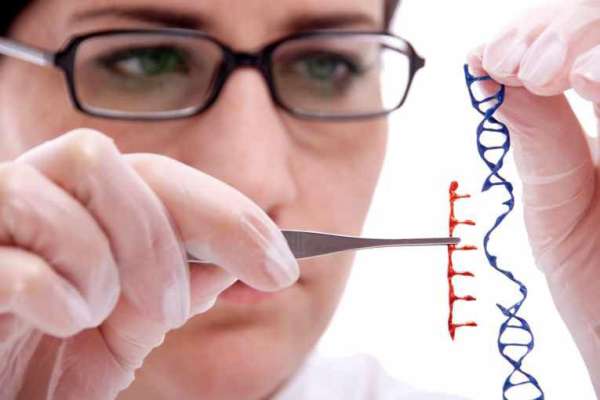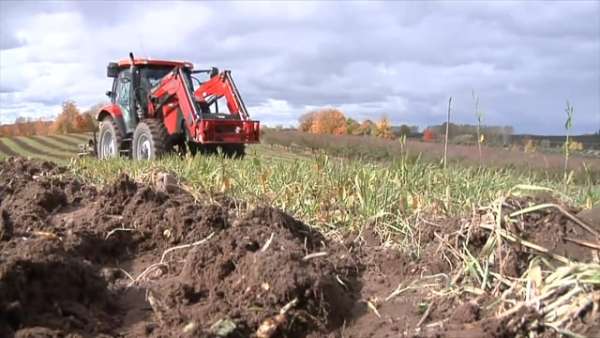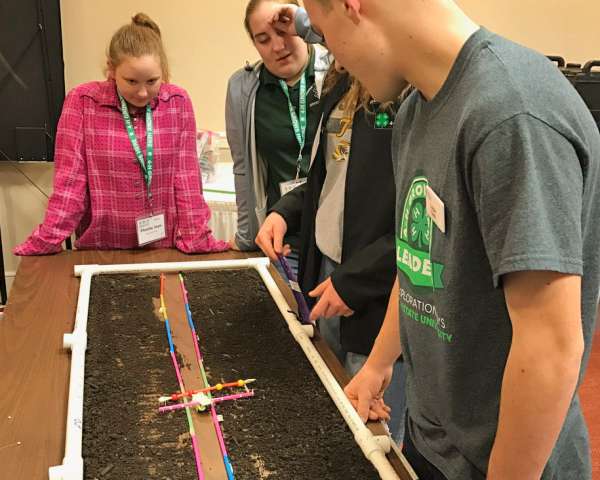Dinner and data and drones, oh my!: technology in agriculture
Lessons
# Introduction to Precision Agriculture
Students gain background knowledge and a better understanding of precision agriculture as a system.
Files
# Light and physics
Various cameras and photography are being used to visualize crop health in a field. Cameras mounted on Unmanned Aerial Vehicles (UAVs) can pick up various wavelengths to help. These lessons begin with a description of light and how various forms of the electromagnetic spectrum, along with visible light can be used to determine plant health.
Files
# Engineering design
Engineering plays a role in designing and developing drones and cameras that can fly heights and distances to capture what is happening in fields. Modeling this process with paper airplanes gives students a chance to use the engineering design process.
Files
Teacher background
There are many definitions of “precision agriculture.” The most recent technology is generally what folks are referring to when they use the term. However, precision agriculture is more than one technology or activity, it is “a management system that is information and technology based, is site specific and uses one or more of the following sources of data: soils, crops, nutrients, pests, moisture, or yield, for optimum profitability, sustainability, and protection of the environment (USDA, Agronomy Technical Note No.1, June 2007).”
The push for the use of precision management systems arises from the future need to feed over nine billion people by 2050. These systems help to maintain productivity and profitability of the agriculture system while attempting to maximize yield. Techniques range from soil testing to determine the amount of nutrients available and the amount needed to grow a specific crop; hybrid or variety selection specific to the conditions under which it will be grown (climate, soil type, etc); pesticide choices to address specific pests within a field; as well as using data from all of these techniques to make future decisions.
Specific technologies have been developed to aid in the use of the data collected by various methods. They include: auto-steering of equipment to maximize field use and decrease overlap of crop planting and fertilizer and pesticide application; GPS systems of various types to enable auto-steering and other technologies; variable rate seeding, fertilizer and pesticide application; yield monitoring systems mounted to harvesters; and remote sensing to collect data about field health and responses to management strategies.
The benefits of these techniques are many. They include: precise nutrient applications that ensure that the right source and right amount is applied in the right place at the right time; precise pesticide applications to address the specific pest; variable rate irrigation making sure the water rate is customized to the crop and the area of the field; ability to see what is happening to the crop within the field, while the crop is growing or after a weather event that may not be visible from the ground; and limiting trips over the field which in turn lowers soil compaction and reduces fuel consumption. (Information taken from nrcs.usda.gov.)
Because of these new technologies, many career opportunities are developing. See this article for more information.
Next gen science standards
Science and engineering practices
- Asking questions (for science) and defining problems (for engineering)
- Developing and using models
- Analyzing and interpreting data
Crosscutting concepts
- Patterns
Disciplinary core ideas/content
- ESS3A Natural resources
- ESS3C Human impacts on Earth systems
- LS1B Growth and development of organisms
- PS4A Wave properties
- PS4B Electromagnetic radiation
- ETS1A Defining and Delimiting an Engineering problem
- ETS1C Optimizing the design solution
- ETS2B Influence of engineering, technology and science on society and the natural world







Share this